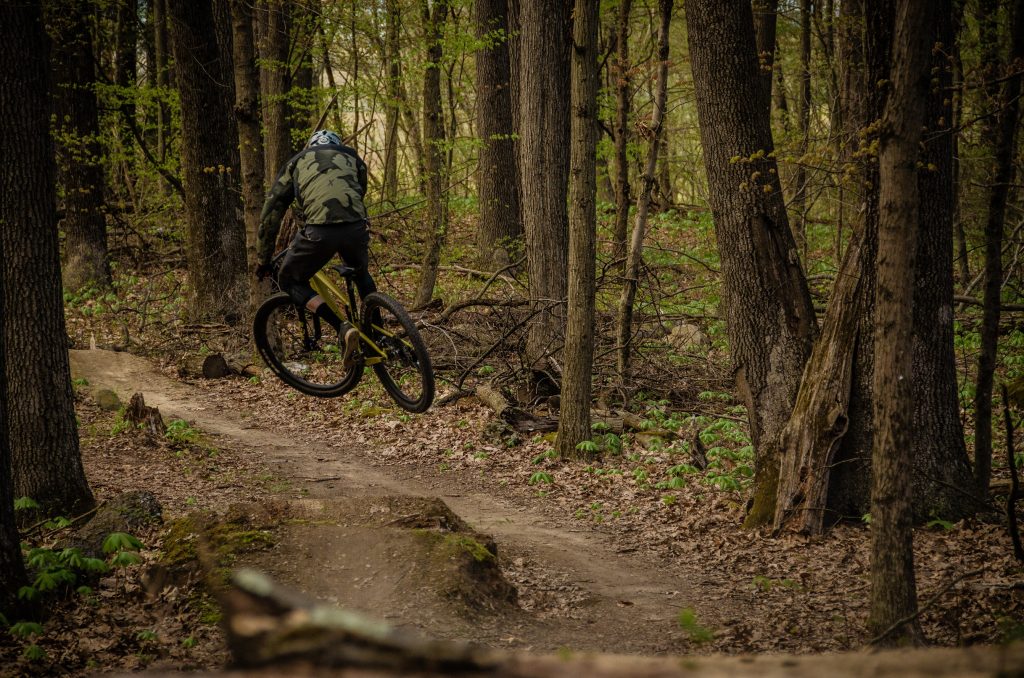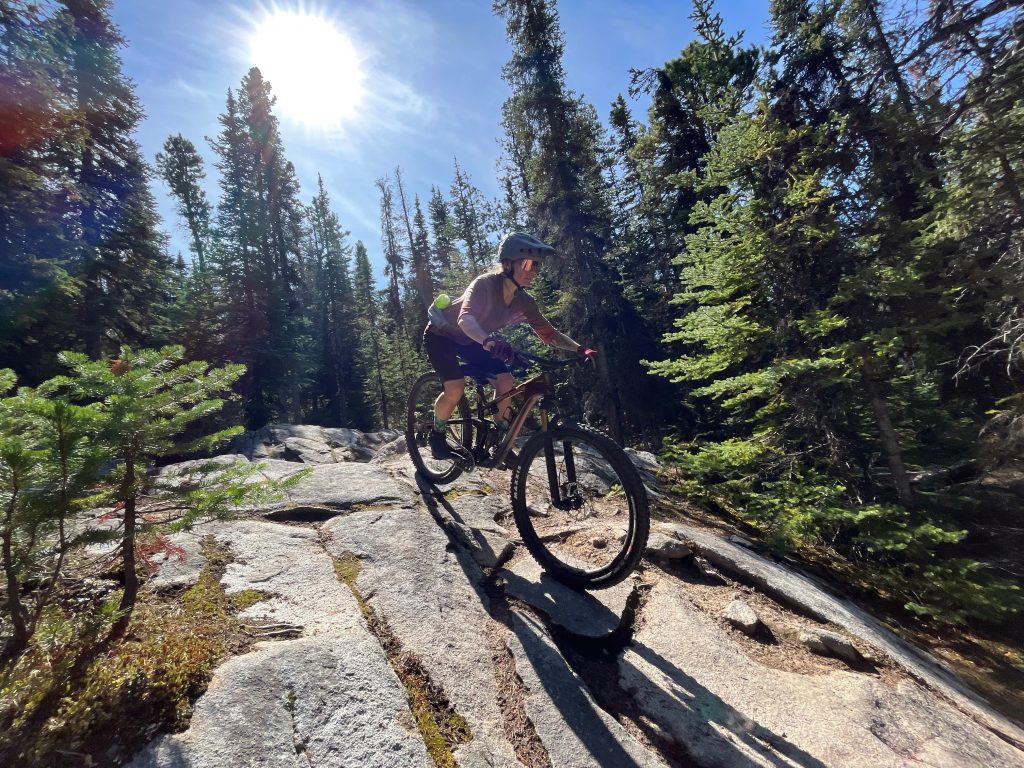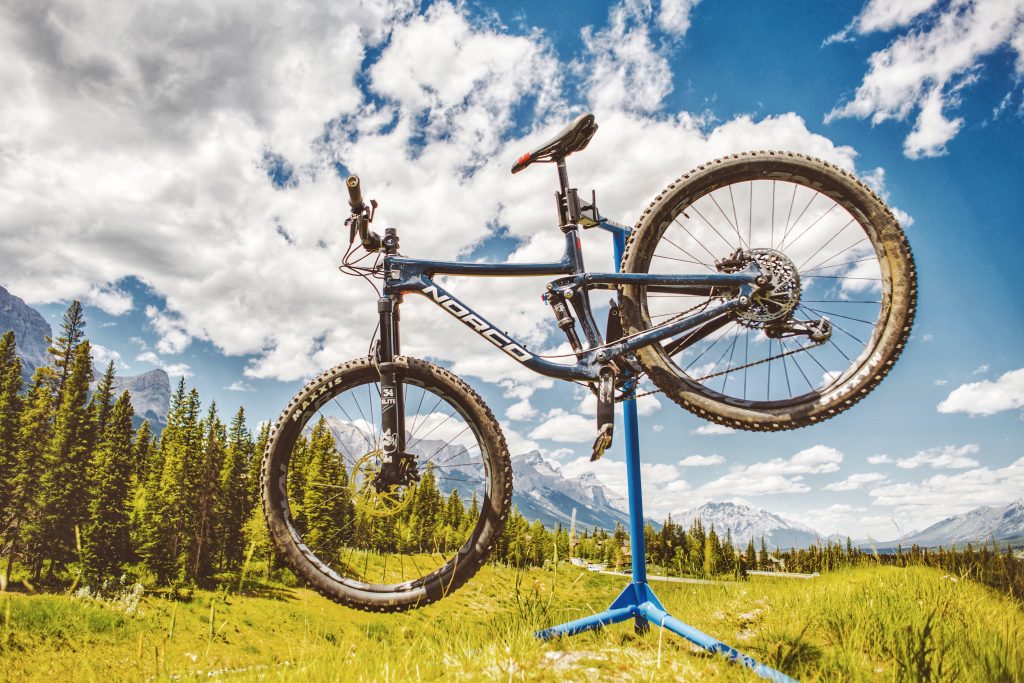Test Ride: The Santa Cruz Tallboy Mountain Bike
Light but tough, a bike that promises adventure

Going downhill, almost too fast for comfort on the new 2020 Santa Cruz Tallboy, the tight trail slips between two trees so close together that the bike’s handlebars touch bark. The trail dives straight down a steep slope lined with sharp stones. This descent is simply too gnarly for us. Yet, another rider—co-founder of Pocono Bike Company, George Halas—on the exact same bike descends with skill and grace.
When searching for the ideal mountain bike for an intermediate rider or somebody as advanced as Halas, we came across the Tallboy—engineered and assembled by hand by the team at Santa Cruz. The full carbon unit we tested, the X01 Reserve, uses SRAM Eagle components and comes in at $7,000. The entry-level model is made of aluminum and uses basic SRAM SX Eagle crankset and shifters, and costs $2,700—still a lot of money, but certainly more accessible.

The Tallboy is available with ultralight carbon fiber and employs a sophisticated front-and-rear suspension that the company calls Virtual Pivot Point. Essentially the bike’s geometry puts the front wheel far in front of the center of the handlebars, allowing for stability at speed—and keeps riders from feeling like they’re going to flip over the front of the bars. Simultaneously, the suspension travel soaks up big bumps and impacts, allowing the Tallboy to handle the type of “Enduro” ski-style, down hill runs once only capable by taller and heavier bicycles.
Those bikes are great going down slopes, but are a literal drag to cycle back up hills. The relative lightness (just under 29 pounds) and lower center of gravity on the Tallboy means that it is buoyant enough to sprint up hills and nimble enough to thread through winding paths in the woods. That result is a cross-country bike that isn’t afraid of steep drops (even if its rider is).

Older mountain bikes typically had 26-inch diameter wheels, whereas the Tallboy has 29-inch tires. While it takes more effort to get these tires moving, once you do, you can roll easily over small logs and rocks. Keeping up your momentum is key. As instructed by Halas, we stay off the brakes when bounding over an obstacle, trusting the bike to make its own way through. The difficulty with the bigger wheels and wheel-forward geometry is that the bike doesn’t take to sudden turns of direction as readily as a smaller bike.
The answer to that is liberal use of the dropper post—another technology of the modern mountain bike era. Trigger the left-hand handlebar lever and the seat drops out of the way, allowing you to crouch on the bike, lowering the overall center of gravity. It takes some getting used to, but the bike becomes a more lithe and lively creature with the seat out of the way.

The great joy of the Tallboy (or any bike) comes with finding the kind of terrain that best works to your skill and comfort levels. We wanted to be challenged and improve ability, and did so in the Pocono mountains, less than two hours from New York City. The steep hills of Glen Park, where we were off the bike as often as not, just isn’t ideal for an intermediate rider. But we found an ideal mix of downhills and winding single-track trails at West End Park, which proves itself to be a rather hidden web, offering a combination of terrains including an obstacle course called Fun Stuff, where riders can roll over log obstacles and through trees. The difference of tackling hurdles like that here versus elsewhere in the mountains is the level of threat—falling while on this course is much safer, thanks to a carpet of soft nettles.
Swooping down and back up over a crest, we avoid our brakes entirely, allowing the suppleness of the Tallboy’s suspension and the knobby Maxxis tires to carry us through. During a series of switchbacks down a gully, with dirt spraying from tires, and nobody else around, the feeling of freedom is almost overwhelming.
Images by Jack Arnold












